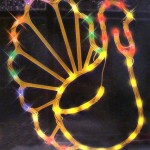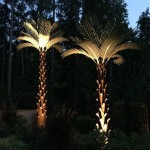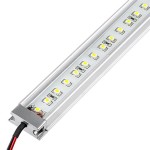Photocell Motion Sensor Outdoor Lighting: A Comprehensive Guide
Outdoor lighting enhances security, improves aesthetics, and increases the usability of exterior spaces. The combination of photocell and motion sensor technology in outdoor lighting systems offers an intelligent and efficient approach to illumination. This integrated system provides light only when ambient light is low and motion is detected, maximizing energy savings and minimizing light pollution.
Photocell motion sensor outdoor lighting utilizes two primary components: a photocell (also known as a light sensor or light-dependent resistor) and a motion sensor. The photocell detects the level of ambient light. When the light level drops below a pre-set threshold, typically at dusk, the photocell activates the motion sensor. The motion sensor, usually employing infrared (PIR) or microwave technology, monitors the surrounding area for movement. If motion is detected within its range, the light is activated. Once motion ceases and a pre-determined time has elapsed, the light automatically switches off. This dual-sensor system ensures that lights are only active when needed, preventing unnecessary operation during daylight hours or in the absence of activity.
Understanding Photocell Technology
A photocell, at its core, is a resistor whose resistance changes based on the amount of light it receives. In darkness, the resistance is high, effectively preventing the flow of electricity. As light increases, the resistance decreases, allowing more current to flow. This change in resistance is used to trigger a switch, which in turn activates other components of the lighting system. The sensitivity of the photocell can be adjusted to determine the specific light level at which the system activates, allowing customization to suit different environments and user preferences.
Different types of photocells exist, each with its own characteristics. Cadmium sulfide (CdS) photocells were commonly used in the past due to their high sensitivity. However, due to environmental concerns related to cadmium, these are being phased out in favor of more environmentally friendly alternatives. Silicon-based photocells and other semiconductor-based sensors are becoming increasingly prevalent. These alternatives offer comparable performance with reduced environmental impact. The selection of the appropriate photocell depends on factors such as the required sensitivity, durability, and operating temperature range.
The integration of the photocell into the lighting fixture is crucial for optimal performance. The sensor should be positioned to receive ambient light without being directly illuminated by the light source it controls. Improper placement can lead to cycling, where the light turns on and off repeatedly. Shielding the photocell from direct light and carefully adjusting its sensitivity setting can mitigate this issue.
Exploring Motion Sensor Technologies
Motion sensors used in outdoor lighting systems primarily employ two different technologies: passive infrared (PIR) and microwave. PIR sensors detect changes in infrared radiation emitted by objects in their field of view. All objects with a temperature above absolute zero emit infrared radiation, and humans and animals emit significant amounts. When a warm object, such as a person or animal, moves into the sensor's field of view, the sudden change in infrared radiation triggers the sensor. PIR sensors are relatively inexpensive, have a wide detection range, and are generally reliable. However, their performance can be affected by environmental conditions such as temperature and humidity. They are also susceptible to false triggers from sources of heat, such as car engines or HVAC vents.
Microwave sensors, on the other hand, emit microwave radiation and detect changes in the reflected signal. They are more sensitive than PIR sensors and can detect motion through walls, doors, and other obstructions. This makes them suitable for applications where a wider detection area is required, or where the sensor needs to be concealed. However, microwave sensors are more expensive than PIR sensors and can be prone to false triggers from environmental factors such as wind or rain. The detection range of microwave sensors can also be more difficult to control, potentially triggering lights unnecessarily.
The performance of both PIR and microwave sensors can be optimized through careful placement and adjustment of their sensitivity and range settings. The sensor should be positioned to cover the desired area without being obstructed by trees, bushes, or other objects. The sensitivity setting should be adjusted to minimize false triggers while still reliably detecting motion. The range setting should be adjusted to limit the detection area to the desired zone.
Advantages and Applications of Integrated Systems
The combination of photocell and motion sensor technology offers several advantages over traditional outdoor lighting systems. The most significant benefit is energy efficiency. By only activating the lights when needed, the system minimizes energy consumption and reduces electricity bills. This is particularly beneficial for security lighting, where lights are often left on continuously, wasting energy and contributing to light pollution. Reduced light pollution is another key advantage. By minimizing the amount of time lights are active, the system reduces the amount of stray light emitted into the environment, helping to protect nocturnal wildlife and preserve the darkness of the night sky.
Another significant benefit is enhanced security. The sudden activation of lights upon detecting motion can deter intruders and alert residents to potential threats. The combination of darkness and sudden illumination can startle potential intruders, making them think twice about approaching the property. Motion-activated lights can also provide increased safety for residents and visitors. By illuminating walkways and entrances, the system reduces the risk of falls and other accidents. This is particularly important in areas with uneven terrain or poor visibility.
Photocell motion sensor outdoor lighting is suitable for a wide range of applications, including residential, commercial, and industrial settings. In residential settings, these lights can be used to illuminate driveways, walkways, patios, and gardens. In commercial settings, they can be used to illuminate parking lots, loading docks, and building entrances. In industrial settings, they can be used to illuminate storage areas, security perimeters, and other outdoor spaces. The versatility of the system makes it a cost-effective and efficient solution for a variety of lighting needs.
The installation of photocell motion sensor outdoor lighting is generally straightforward, but it is essential to follow the manufacturer's instructions carefully. Most systems are designed for easy installation by homeowners, but complex installations may require the assistance of a qualified electrician. Proper wiring and grounding are crucial for ensuring the safety and reliability of the system. It is also important to select fixtures and sensors that are appropriate for the specific environment and application. Weather-resistant fixtures are essential for outdoor use, and the sensor should be positioned to avoid direct exposure to water and sunlight, which can damage the components.
Maintenance of photocell motion sensor outdoor lighting systems is minimal, but regular inspections are recommended. The lenses of the photocell and motion sensor should be cleaned periodically to remove dirt and debris, which can affect their performance. The batteries in wireless sensors should be replaced as needed. Any damaged or malfunctioning components should be replaced promptly to ensure the continued operation of the system. By following these simple maintenance steps, the lifespan and performance of the lighting system can be maximized.
Advancements in technology continue to improve the performance and capabilities of photocell motion sensor outdoor lighting systems. Smart lighting systems, which can be controlled remotely via smartphone or tablet, are becoming increasingly popular. These systems offer features such as adjustable sensitivity, programmable schedules, and integration with other smart home devices. LED lighting is also becoming increasingly prevalent, offering significant energy savings and longer lifespan compared to traditional incandescent or halogen bulbs. The combination of smart technology and LED lighting is creating a new generation of highly efficient and versatile outdoor lighting solutions.

Clearance Le 15w Led Security Lights Motion Sensor Light Outdoor Waterproof Flood With Photocell 1300lm Daylight White 5000k Etl Listed Eave Wall Mounted Floodlight For Backyard Driveway Garage Yard Furniture

Photocell Motion Sensor 10a Energy Saving Switch For Lighting

China Photocell Sensor Microwave Motion All In One Solar Street Light Area Lighting Lights Made Com

3 Head Brown Outdoor Led Security Light 2700 Lm Photocell

How To Add A Light Sensor Outdoor Lanterns The Navage Patch

Hampton Bay Alexandria 17 3 In Black Farmhouse 180 Degree Motion Sensor Outdoor 1 Light Wall Sconce Hbi 4192 Bk The Home Depot

External Pir S Photocell Sensors Downlights Direct

Motion Sensor And Dusk To Dawn Decorative Outdoor Lighting Deep Discount

Motion Sensor Led Street Light With Smart Controller Factory

Partphoner Motion Sensor Outdoor Lights Fixture Dusk To Dawn Waterproof Lighting Exterior Wall Sconce 2 Pack Com
Related Posts







